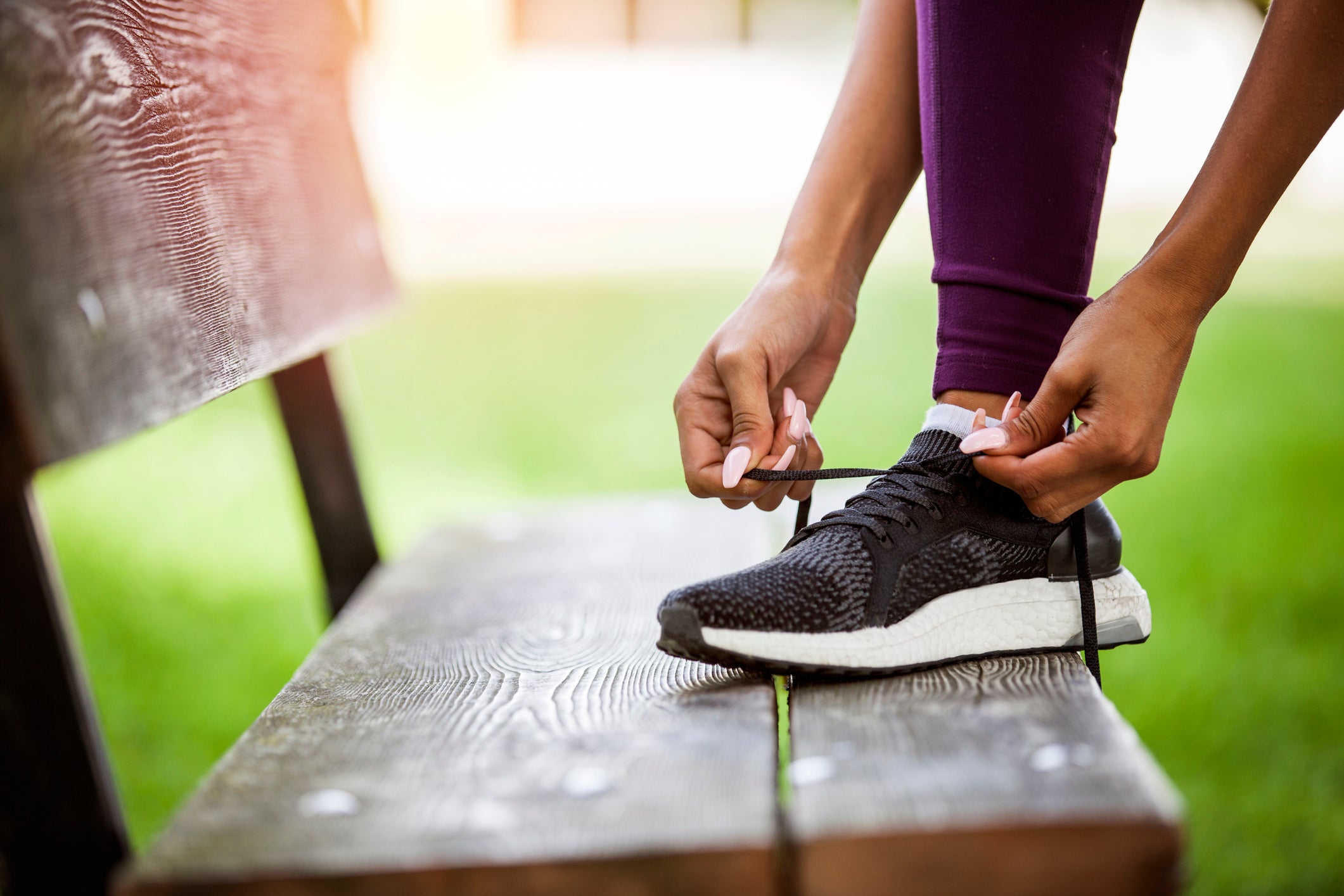You probably need new running trainers, here are some tips to upgrade
The chances are if you were a runner before lockdown, you’re running more now. And if you weren’t, you might well be running now. Either way, it’s possible you need new trainers. Talya Meyers is here to help

If you run, you’re a runner. And if you’re a runner, especially one who has hit the pavement more in the past year, there’s a good chance you need to upgrade your running shoes.
“The most important thing for us is that you’re moving, that’s great,” says Kate Reese, a manager at Brooklyn Running Company. “But if you’re starting to feel beat up, a footwear change can help.”
The good news? Even if you haven’t changed your trainers in years, you most likely do not need the latest carbon-fibre technology or the coolest new shoe. You just need guidance to find your best fit.
Start with the bottom of your current shoes
To begin, look at what you’ve been working with. Have you been running with an old pair of trainers? A pair of shoes you bought years ago, or ones you purchased on a whim a few months back? How many miles do you think you’ve run in the past few months? And do you have any aches or pains?
Read More:
When a shoe begins to wear down, the support and cushioning becomes less effective. The bottom of your shoes will give you some guidance as well. If you notice the tread is worn out, or even “balding” in some places, it’s a sign that you are due for a new pair of trainers. The patterns of wear and tear will also provide clues as to how you load your weight as you run, and these markers could be helpful when you look for your next pair of shoes.
Next, head to a local running store
A specialty shoe store should be staffed by local runners who know the sport and have had their own aches and pains.
Ideally, a staff member will take a look at your feet and watch you walk or run to evaluate your stride. You want a conversation where you have the opportunity to run or walk (on a treadmill or outside) in a handful of shoes and discuss goals and concerns, such as specific pain points or training plans.
You may try on a variety of shoes with different levels of arch support and cushioning. Make sure you have about a thumbnail-width of space between your toes and the end of the shoe, and pay attention to what feels most comfortable.
Shoes should be replaced, on average, after every 350 miles run, experts say. But runners wear through their shoes based on their routines
Finding expert advice has become easier during the pandemic, thanks to the emergence of virtual running-shoe appointments. Many running stores now have the option of making a video appointment and will ship a selection of shoes to you. Expect all of the same service you would get in person, including some walking tests and discussions around any specific physical concerns and running goals. Make sure to read the fine print before taking any shoes out for a test drive – though some retailers take returns with minimal hassle, others may have more restrictive return policies.
Regardless of where you try your new shoes, you should have a Goldilocks moment when you find the right fit, something only you – and not the experts – can identify.
“It should feel very intuitive, very natural, like an extension of your foot,” Reese says. “I encourage people to walk around or jog around or even get on a treadmill. It should feel as if it’s moving with you. It should be aligned with where your foot wants to move.”
Expect to spend around £130 on a good pair of running shoes, and focus on function and fit over fashion. That new sleek shoe you saw a photo of in a health magazine may not be the one that works for you. Reese urges runners to think of their shoes as a tool being purchased for a purpose, not as a fashion statement being made in the park.
Know when it’s time to move on
Shoes should be replaced, on average, after every 350 miles run, experts say. But runners wear through their shoes based on their routines; trail runners may wear through shoes differently than a rugby player. You can safely assume that if you continue running, you will need to invest in new pairs of shoes pretty regularly.
Read More:
Take note of what you like and don’t like – considering cushioning, stability and the weight of the shoe. Then make sure to mentally note how supportive your shoes feel as the miles and minutes tick on.
© The New York Times
Subscribe to Independent Premium to bookmark this article
Want to bookmark your favourite articles and stories to read or reference later? Start your Independent Premium subscription today.

Join our commenting forum
Join thought-provoking conversations, follow other Independent readers and see their replies